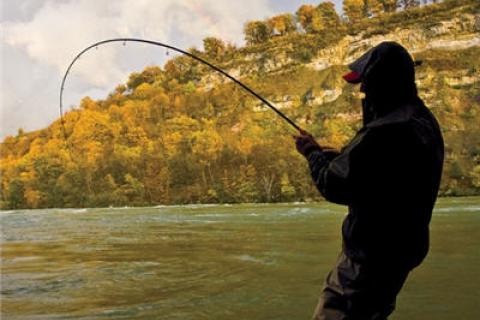
 Not only is it rewarding and delicious to prepare the day’s catch as your evening meal, but it can also be incredibly good for you: Fish is an excellent source of protein that’s high in vitamins and minerals, and low in fat. Fishermen and fisherwomen should be aware, however, that while fish in general tends to be a very healthy choice, fish from certain bodies of water may be unsafe to eat due to contamination.
Not only is it rewarding and delicious to prepare the day’s catch as your evening meal, but it can also be incredibly good for you: Fish is an excellent source of protein that’s high in vitamins and minerals, and low in fat. Fishermen and fisherwomen should be aware, however, that while fish in general tends to be a very healthy choice, fish from certain bodies of water may be unsafe to eat due to contamination.
Fishermen and fisherwomen can educate themselves on which fish is safe to eat with fish consumption advisory tools from the United States Environmental Protection Agency. These safe eating guidelines highlight which fish from certain bodies of water to avoid due to contaminants -- including mercury, PCBs, chlordane, dioxins and DDT. In addition, the safe eating tools also provide guidelines for fish consumption for those particularly at risk from mercury consumption, including pregnant women, nursing mothers, those women who may become pregnant and young children.
To learn more about these topics, use the following three tools from the EPA:
- Advisories Where You Live Map/Search
To use this tool, pictured in this post and found here, simply enter your state and body of water, and click “Search.” If any advisories exist at the particular body of water you’ve chosen, you can review the full advisory report, which provides details from status of the advisory, when it was issued, pollutant and species details, and who to contact with questions regarding the advisory. - National Listing of Fish Advisories Directory
This directory, found here, provides a state-by-state listing of those to contact regarding advisory information. Details listed include name, agency, state, address, email address, phone number and website. - “Should I Eat the Fish I Catch?” Brochure
This entry-level primer, found here, outlines how to safely eat the fish you catch, from beginning to end -- from catching to cleaning to cooking. Some of the steps outlined in the brochure include:- Contacting your local advisory representative to learn of any advisories in your area.
- Choosing younger, smaller fish to eat, as they are less likely to contain higher levels of pollutants than more mature fish.
- Choosing to eat fish that feed on insects -- bluegill, perch, etc. -- rather than those that feed on the bottom like catfish.
- Cleaning and cooking fish properly.
Enjoy your catches safely and healthfully with these helpful resources. Happy fishing!
- 2881 views

